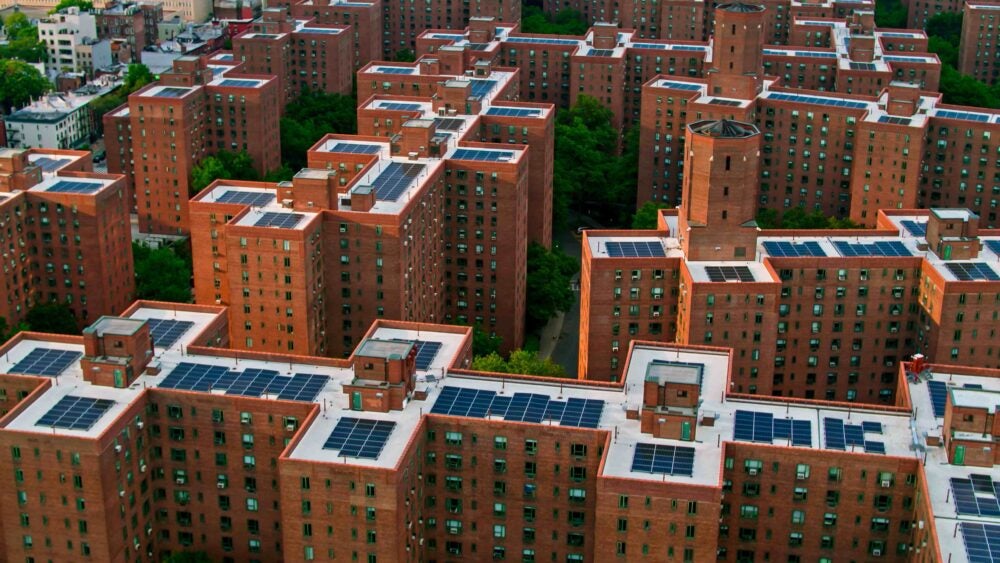
Blog
Is Land a Good Investment?
Blog
The escalating cost of housing has become a pressing concern for many Americans. As housing prices increase significantly, the concept of homeownership seems increasingly unattainable for a significant portion of the population. Understanding why houses are so expensive requires a comprehensive examination of various factors, including supply and demand variations, economic conditions, government policies, and historical trends.
The purchase of a home is often the only real estate ownership that individuals experience directly. At Georgetown University McDonough School Business, students pursuing a Master of Science in Global Real Assets must have a clear understanding of the drivers of this asset class. This article draws from the program’s Housing Markets and Social Infrastructure course.
So, what’s driving up home prices?
At the heart of the surge in housing prices lies the fundamental economic principle of supply and demand. When the demand outpaces the available supply of houses, prices naturally rise. Several factors contribute to this imbalance:
Over time, lower interest rates have reduced the cost of borrowing, making it easier for more people to buy homes. To boost the economy, especially in times of recession, the Federal Reserve often cuts interest rates. Although this lowers mortgage rates, it can also lead to higher demand, which, when supply is constrained, can push housing prices upward.
The U.S. population continues to grow, adding pressure to the housing market. Immigration and higher birth rates contribute to an increasing number of households needing accommodation. The Pew Research Center projects that immigrants and their descendants will account for 88% of the U.S. population growth through 2065.
As housing prices rise, so do the amounts required for down payments. Traditional mortgages often require a 20% down payment to avoid private mortgage insurance. For a median-priced home of $350,000, this equates to $70,000—a substantial sum for many Americans
First-time buyers face unique hurdles:
Homeowners in rapidly appreciating markets may experience significant tax hikes. For instance, property taxes in the Washington, D.C. metro area have increased by 25.4% between 2019 and 2023, with median property taxes rising from $2,036 to $2,554 during this period.
Real estate has generally been a sound investment due to property appreciation. On average, home values in the United States have increased by about 5% annually since 1968. However, this growth is not uniform and can be influenced by local economic conditions.
The early 2000s saw a housing bubble fueled by easy credit and speculative buying. In 2008, home prices collapsed, leading to foreclosures and a financial crisis. Lessons from this period highlight the risks of unsustainable price growth.
Inflation erodes purchasing power, but real assets like homes often retain or increase their value during inflationary periods. As construction costs rise due to more expensive materials and labor, these costs are passed on to buyers.
Local governments use zoning laws to control land development. While these regulations can preserve community character and environmental quality, they can also limit housing supply. For example, single-family zoning restricts land to one house per lot, reducing density and exacerbating supply shortages.
Governments often implement programs to address affordability, such as:
While beneficial, these types of programs often face funding limitations and may not meet the overall demand.
Tax policies can encourage homeownership, for example the Internal Revenue Service allows for:
While these incentives can make owning a home more affordable, they may also inflate demand and, consequently, prices.
A robust economy enhances employment and wages, bolstering individuals’ capacity to purchase homes. However, if housing prices escalate more rapidly than incomes, affordability diminishes. From 2012 to 2023, the median sales price of homes increased by approximately 87%, while the median household income rose by about 18%.
Investors from abroad often view U.S. real estate as a safe investment, which drives up demand, especially in major cities. International buyers purchased $42 billion worth of U.S. existing homes between April 2023 and March 2024, marking a 21.2% decline from the previous year.
Economic downturns can depress housing prices due to decreased demand. However, low interest rates used to stimulate the economy can counteract this effect by making borrowing cheaper, sometimes leading to a quicker rebound in housing prices.
Economists and real estate experts have varying views. Some predict that housing shortages will persist, keeping prices high. Others foresee a stabilization or slight decline in prices as supply catches up with demand.
The COVID-19 pandemic reshaped housing demand and its impact is still being felt:
Any Federal Reserve adjustment to interest rates can affect mortgage rates:
The high cost of housing is influenced by many elements, from the imbalance of supply and demand to economic conditions, government policies, and historical trends. Limited housing supply amid growing demand, interest rates, and regulatory constraints have all contributed to escalating prices.
While challenges persist, especially for first-time buyers, understanding these influences can help prospective home buyers navigate the complex housing market. Future trends remain uncertain, but staying informed and considering expert insights can aid in making sound real estate decisions.
Blog
Blog
Blog


